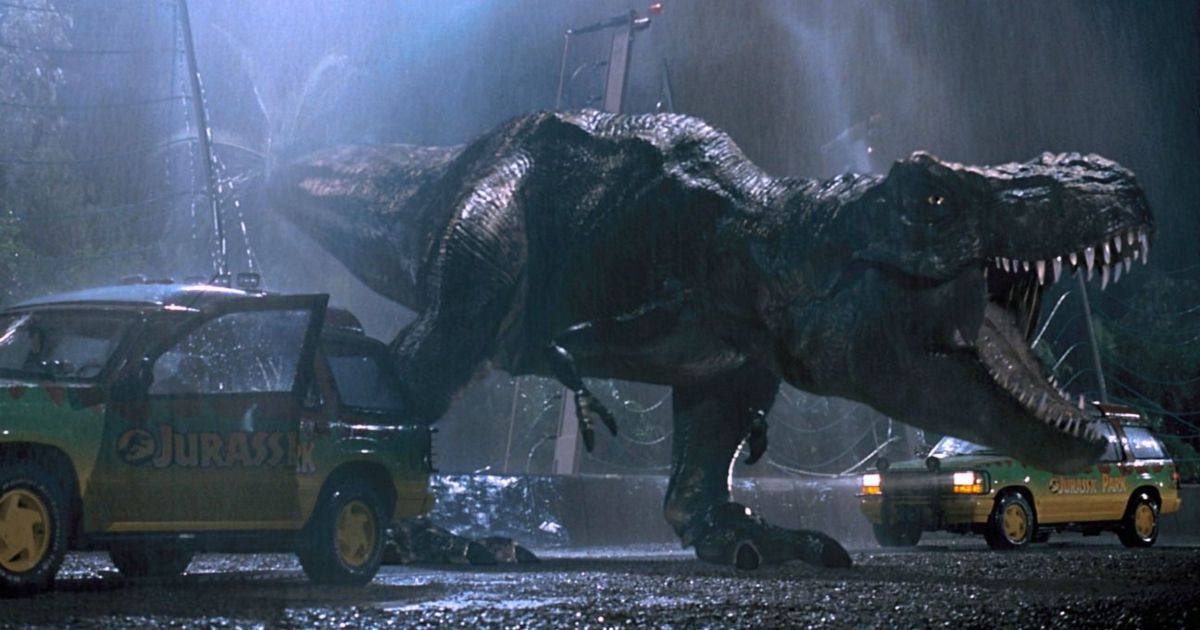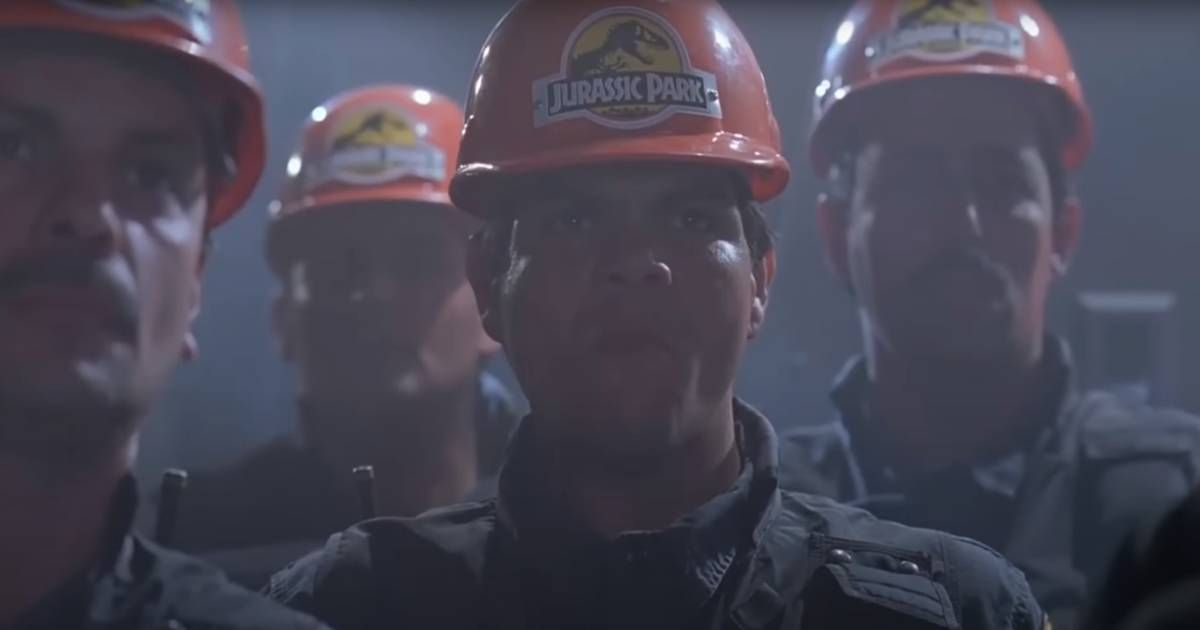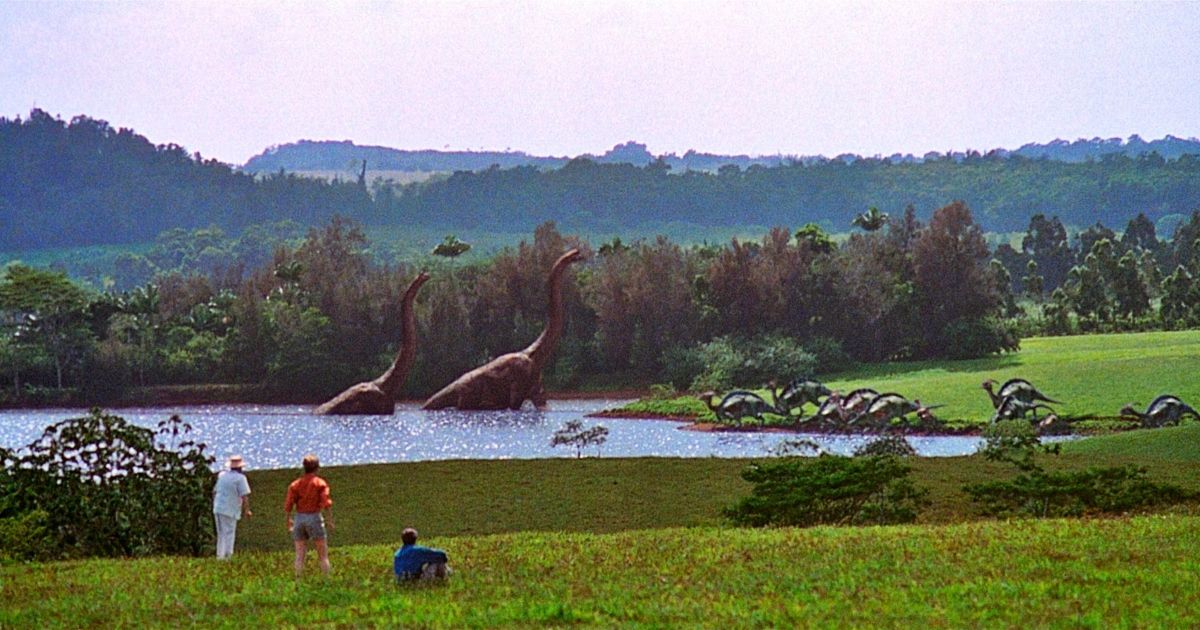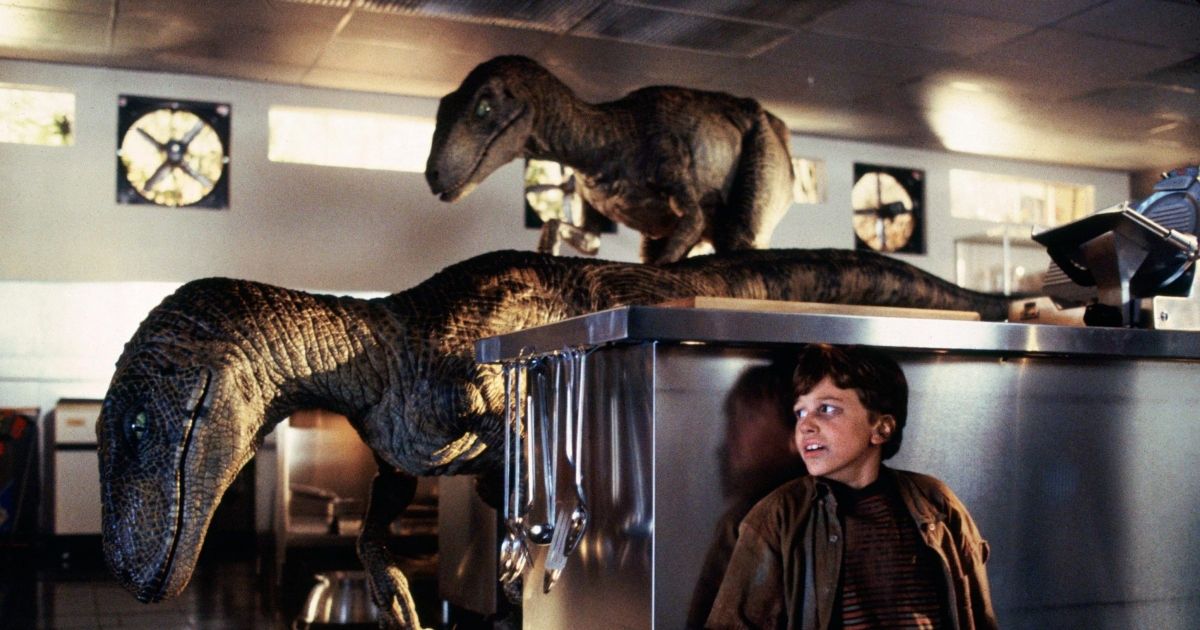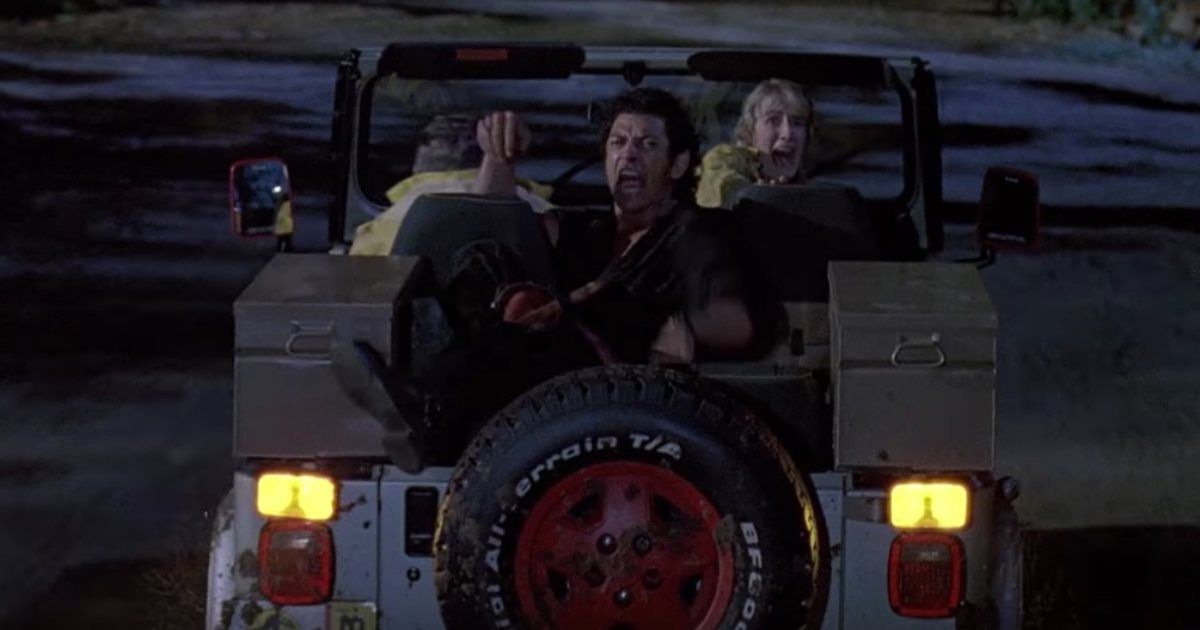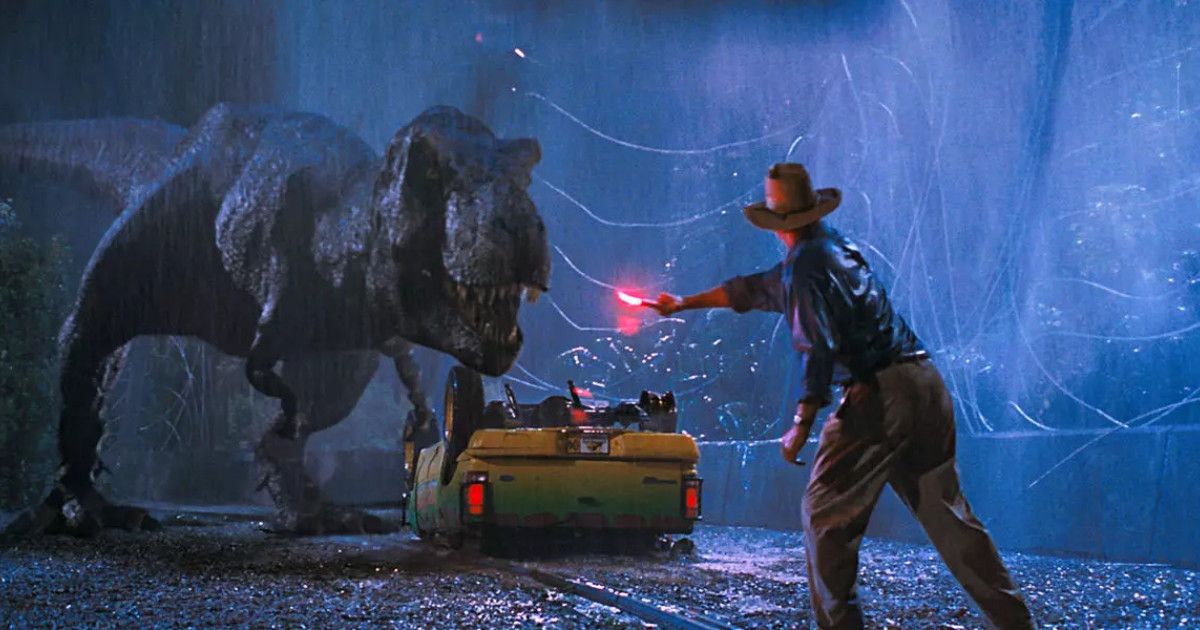Anyone old enough to remember when the legendary first Jurassic Park film hit theaters will probably be just as surprised that it's already been 30 years since that iconic moment in cinematic history. There have since been six more films in the franchise, an animated series for Netflix titled Jurassic World: Camp Cretaceous, as well as the 2019 short film, Battle at Big Rock, which took place after the events in Jurassic World: Fallen Kingdom. Between 1993 and today, the original film's style and visual effects have changed a lot, too.
When great films are updated, the technological advancements that occur during sequels usually boost a film's realism and make it better in every way. However, in the case of Jurassic Park, there aren't many people out there, if any, who would seriously argue that the Jurassic World films, or even Jurassic Park III for that matter, could ever come close to being better than the original film in any way. Aside from just being superior in every way, Jurassic Park was one of the most significant films in movie history, too. Let's unpack why that is, as well as why, 30 years later, none of the Jurassic World films were ever better.
Update November 15, 2023: Jurassic Park is celebrating its 30th anniversary so this article has been updated with more information about why the first film has remained so iconic.
Jaws With Claws
Jurassic Park tells the story of the greatest theme park in the world, at least before its grand opening. John Hammond has found technology to clone dinosaurs and bring them back to life to be entertainment spots in his new park. To evaluate the feasibility of such a venture, he hires dinosaur experts as well as a "chaos theory" guy. Of course, he invites along his grandchildren. The very same day they arrive, a tropical storm hits the park and power goes out. Oh yeah, and the IT guy, Dennis Nedry, unblocks the padlocks that keep the dinosaurs away from humans.
The result is a disaster film with enough adventure, horror, and science fiction to be the perfect '90s Spielberg film. Children in peril, great special effects, and the constant menace of living organisms that we can't understand. Yes, it's like Jaws but in a tropical jungle where we don't have the upper hand.
At the time, films like Jurassic Park weren't made. The scope was simply too big, and technology was "decades away" from being helpful. However, Spielberg had heard of Michael Crichton's new novel before it was released and became instantly fascinated. Some bid wars later, and Universal bought the rights and gave Spielberg creative control over the film. This was in May of 1990, more than two years before shooting would start. Such preparation meant Spielberg would prepare himself to deliver a legacy-changing spectacle that, 30 years later, still looks great in just about every aspect.
The Technical Importance of Jurassic Park
Jurassic Park swept through the world, evoking dinosaur mania throughout every corner of the globe, but dinosaur films had been around long before the film first hit screens. Everything from stop-motion, go-motion, prosthetics, animatronics, and other traditional methods used to produce SFX and VFX thrills for audiences showed up in these previous dino-centric movies. Computer-generated imagery (CGI) had also been around before Jurassic Park. Previously successful uses of it in film had been seen in movies like Terminator 2: Judgment Day and Tron, with CGI even dating as far back as 1977 through its limited use in major films like Star Wars.
However, when Spielberg recognized CGI's amazing and virtually limitless potential, his decision to utilize it in Jurassic Park heralded a massive shift in cinema history. Once the world was astounded by how seamlessly and realistically computer effects could now be integrated into movies, it wasn't long before every major director and film studio was clamoring to add CGI to their projects too. CGI has long since become the norm and the go-to style of effects in modern filmmaking, so much so that it's now taken for granted. The reality, however, is that CGI now struggles to ever wow audiences like it once did — ironically, its overuse in films often becomes a reason to dislike certain films too.
Spielberg wanted to go big, and this wasn't the case of another Jaws (although the production had issues when Hurricane Iniki hit Hawaii). He had more budget, more control, and, yes, computers. However, he hired Stan Winston for the animatronics and Dennis Muren for digital effects. All this under Phil Tippett's supervision. This meant he had the ambition and force to create a massive entertainment product that wasn't necessarily friendly. With Jurassic Park, Spielberg made us believe in dinosaurs, but he also put them beside humans as creatures that weren't supposed to exist at the same time.
Jurassic Park Set a Template
Aside from the brilliant use of CGI, however, Jurassic Park was also significant for how well it integrated this technology with traditional SFX and VFX. In fact, Spielberg originally didn't want to use CGI in the film, and special effects master Phil Tippett (Star Wars, Robocop) was going to just use his brilliant go-motion technique.
However, Spielberg later realized it would be too expensive to use massive animatronic models, and this would have likely rendered the film a lot less realistic too. Ironically, when Spielberg told Tippett that they needed CGI, Tippett said something like, "I've just become extinct." Spielberg would use that very line in Jurassic Park. Tippett's work would not go unnoticed, as his blueprints were essential for the 3D modeling that would later be accomplished digitally.
In the end, Spielberg and the VFX team, which was controversially led by CGI master Steve "Spaz" Williams, created a visual feast for viewers through what only amounted to six minutes of CGI dinosaurs in the film, but still forever changed the course of cinema history with its brilliant use and the added realism it created back then. In 1993, when the film was released, audiences truly experienced the best CGI effects up to that point. It was a cinematic moment that nobody would ever forget.
The Spielberg Effect on Jurassic Park
However, since the days when the new era of the Jurassic Park film franchise commenced with Jurassic World, there has been yet another noticeable shift in the way these films compared to the magic of the original. If CGI was so successful and legendary for the way it elevated Jurassic Park, it seemed incredulous that its wider use in Jurassic World would replicate the magic of the first film.
In perhaps one of the most poignant lines from Jurassic World, the park's lead geneticist Dr. Henry Wu, speaks about how the public's need for bigger and scarier dinosaur attractions lead to the creation of a terrifying hybrid specimen that causes mayhem and destroys the park. This line perhaps echoes precisely why, to Jurassic Park purists, the Jurassic World films can never match up to their original predecessor.
In the rush to overuse CGI and create effects that are grander, scarier, larger, and more thrilling, the creators of the new films seem to have lost the soul of what made Jurassic Park so special in the first place. A large part of this was the Steven Spielberg effect. His touch on the film gave it something special that no amount of CGI, or bigger, scarier dinosaurs could ever replicate or improve upon. He had the human and emotional touch of a well-directed cast that added the dramatic layer to a film that simply didn't need it.
Spielberg grounds the movie in very relatable human drama. While the dinosaurs are teased, they are not shown in full until about half an hour into the movie. Yet audiences don't care or mind the way because they are invested in the richly detailed characters of Alan Grant, Ellie Settle, Ian Malcolm, and John Hammond. They then soon become invested in the kids, Tim Murphy and Lex Murphy, and the various interpersonal dramas amongst them all.
While the dinosaur fun is enjoyable, the film has stakes because the audiences care about the characters. They not only want them to make it out alive but also relate to them. While later sequels would try to bring back the previous cast members, it was often done as a cheap ploy to generate audience nostalgia. They went from being characters to props, but Spielberg never did that.
What Made All the Difference
If you were lucky enough to have lived through the period when Jurassic Park first hit movie theaters around the world, you will likely fondly remember the electric buzz of excitement that accompanied this film. After all the build-up and hype, watching it only heightened the craze. This was because the movie didn't disappoint, and in fact, it actually exceeded expectations.
Steven Spielberg's true brilliance often goes beyond his ability to visualize and then bring to life groundbreaking shots. His unique and pioneering qualities come from his ability to build tension and imbue scenes with some astoundingly well-thought-out action scenes. The sound design was top-notch, but it was touches like the T-Rex's arrival in the film that made it so magical: an event foreshadowed by the ripples in a glass of water and the dull echo of its gigantic footsteps pounding away in the distance. By the time the iconic Rex actually showed up, the viewer's nerves were already shaken, their minds in awe of the visual spectacle that followed.
And boy, did these spectacles not disappoint either. The fact that Spielberg used rain to bring layers of added realism to the animatronic shots of the T-Rex, coupled with minute details like adding pupillary miosis to its eye when a torch lights it up, were simply too good and uniquely authentic ever to be matched by the blurry CGI hodgepodge of wildly-paced action sequences that dominate the Jurassic World films.
Thirty years later, Jurassic Park holds up because Spielberg didn't make an over-exposed sci-fi adventure. He observed the details and kept them in the backdrop as secondary but inevitable elements. He knew his limits when making a "special effects film" and made good use of his judgment of what to show and what to blur between the rain and mud. Additionally, the characters were well-built and far from being boring. You truly wanted them to win, although some discussions about Hammond are divisive in this regard.

